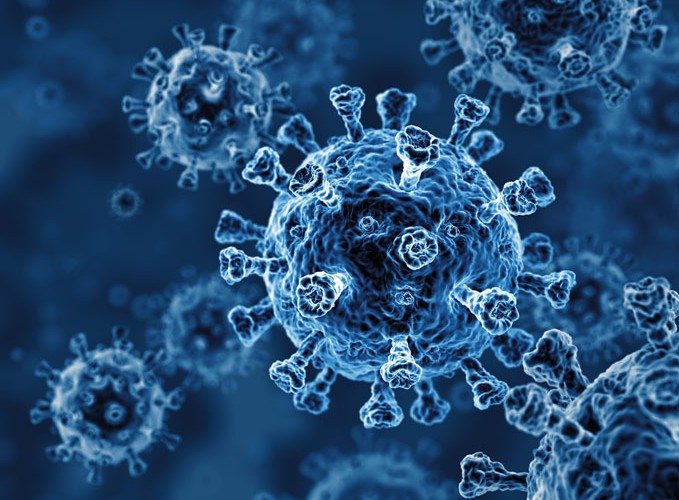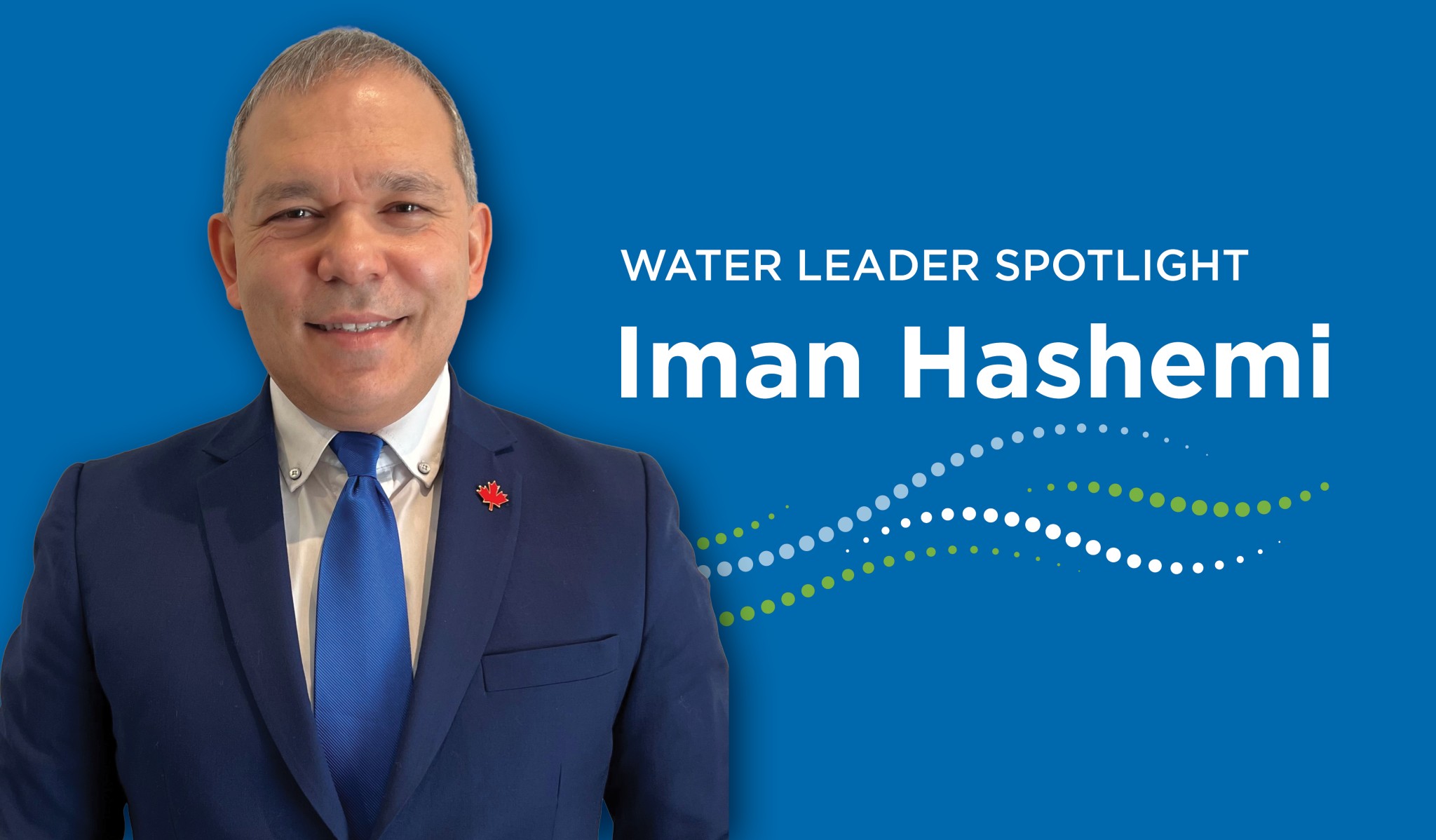Thought leader interview with Dr. Niladri Basu from McGill University
September 11, 2024
CWN’s quarterly newsletter with the latest news, insights and thought leadership.

Canadian Water Network’s (CWN) CEO Nicola Crawhall sat down with Dr. Niladri Basu for a fascinating discussion on the revolution underway in toxicity testing and implications for regulations and approvals in Canada.
Dr. Basu is a Canada Research Chair (Tier I) in Environmental Health Sciences. He is also a professor in the Centre for Indigenous Peoples’ Nutrition and Environment (CINE) and the Department of Natural Resource Sciences at McGill University. Dr. Basu’s areas of expertise include:
- Exposure of humans and wildlife to toxic environmental chemicals, like mercury.
- Global health focused on policy, environmental justice and the extractive sector.
- Development, validation, and application of new approaches to rapidly test chemicals/samples for toxicity.
How did you come to focus your research on environmental pollutants, toxicity and human exposure? What role does environmental justice have in your approach to this research?
Environmental justice is the foundation of my research program and interests. I came into this field given a range of personal experiences. I had asthma as a child, and learned early on that if it’s yucky outside, I felt yucky inside. I also visited my grandparents regularly in India, and remember playing with the chemical ash in their yard that would fall from refineries nearby. But the most pivotal moment was a Grade 11 trip to Love Canal, near Niagara Falls, New York, one of the most infamous sites in environmental sciences that showed us what happens when 20,000 tons of carcinogenic waste is dumped in a community and what happens when the members of that community aren’t listened to.
From these and other experiences, I decided to pursue an academic career to equip myself with the knowledge and skills to address these types of situations. I went to Queen’s University where I completed a double major in Environmental Sciences and Life Sciences, and worked in a fish toxicology lab with Peter Hodson. That was followed by graduate work at the University of British Columbia, where I joined George Iwama’s research team to learn about stress responses in fish. I then joined Laurie Chan’s team at McGill University, researching contaminant impacts on wildlife and people. I next worked for two years at Environment Canada, then started as a professor at the University of Michigan School of Public Health prior to returning to Canada. Throughout my research and teaching, I have always been motivated by environmental justice.
Can you explain what the traditional methods have been to water quality testing and toxicity testing, and some of the shortcomings of these traditional methods?
For decades, toxicity testing has largely been based on experiments involving animals. These types of tests have major flaws.
Firstly, the tests are conducted in sterile labs over a short period of time. This is not how animals are actually exposed in the real world to diverse stressors.
Secondly, thousands of animals are killed every year in these experiments, which makes this an ethically questionable approach.
Thirdly, testing focuses on a single endpoint, which is usually mortality/death. It doesn’t give a good sense of what organ system or disease causes death. It does not reveal the true health effects, from which we cannot understand the underlying mechanisms, variability in responses within a population, and how different species respond differently.
For example, with fish, testing is done on a few select species in the lab. This information is then extrapolated to predict risk to hundreds/thousands of native fish across Canada. This extrapolation introduces more uncertainty and variability which further complicates risk assessments.
These are all significant shortcomings of traditional toxicological testing methods.
What changes have occurred with new approach methods over the last 10-15 years that address some of these shortcomings?
Over the last two decades, there have been a range of significant scientific and technological advances. Three key ones are:
- Alternatives to animal testing. This has been motivated by ethics, a recognition that animal testing is cruel, and the 3Rs principle. Some new methods use cell lines and tissue cultures instead of animal models.
- Instead of counting dead animals, we can now look at responses at the molecular level. Through advances in genomics, we can measure responses in thousands of genes, proteins, and small molecules.
- Another advancement has been driven by the increase in computational powers. The emergence of in silico methods have helped realize large databases on chemicals and how organisms will respond, and these can be used to predict the effects of certain chemicals and responses in certain species.
But the greatest change in my opinion has been regulatory change. Traditional toxicity testing is a highly institutionalized field of practice. Changing such practices is difficult and takes time. As a scientist who has been advocating for this change, it’s very gratifying to see it happen now. Legislative changes that permit or require new approach methods are being adopted in the European Union, the United States, and now in Canada with the adoption of the Strengthening Environmental Protection for a Healthier Canada Act in 2023. This is a really important development in Canada.
This change is likely happening due to societal advocacy and scientific pressure. And probably also due to a new generation of risk assessors and scientists within government agencies who themselves recognize shortcomings.
Can you explain in greater detail how molecular or genomic-based methods work and what advantages they offer over traditional methods?
There are a number of advantages to molecular or genomic-based methods. If you think about traditional test methods, you look at one endpoint, death, which doesn’t tell us much. Genomics allows us to look at responses at the cellular or molecular level, looking at thousands of genes, proteins, and small molecules. This area has moved forward as technologies have matured and become more affordable and accessible, so they can now be scaled. Only a decade ago, only a few labs in the world could do this type of analysis. Now, every university lab with basic molecular facilities can implement such a program.
Another advantage is that genomics approaches offer a lot more information. Well before animals die, or get sick, there are subclinical changes that occur that we can’t see at the cellular level. So we now have methods to peer into these cells and to measure changes in proteins and genes. For example, we can identify changes in genes that are specific to our immune system or proteins that indicate stress to our cardiovascular system. In doing so, we can predict what organ system will be affected and do this much earlier in the disease continuum.
We can also mathematically model these genomic measures. In the traditional ‘dose response model,’ with increased exposure to a chemical one will typically eventually measure death. The quantitative data from these models are the backbone of regulatory guidelines.
By applying these models, and instead of waiting for death, we can now quantify at what chemical concentrations genes start to change. These genomic-based concentrations provide quantitative information of early stress and are viewed to be “protective” as they are concentrations that precede ones associated with adverse outcomes. And there is the added advantage that these types of models are already familiar and trusted by regulators.
To summarize, typical animal test takes year, and cost millions of dollars. As a result, most chemicals in commerce have not been assessed. A new approach built on molecular techniques using alternative to animal models is cheaper and quicker, and also helps increase our knowledge of health risks posed by chemical pollutants.
What are the implications for regulating chemicals of these new approach methods, and, in particular, implications for Canadian chemicals assessment and regulation?
Simply put, modernizing chemicals assessment and regulations will have a range of socio-economic benefits to Canadians and our environment. New approach methods promise to make the process more ethical and efficient.
Operationalizing this will be difficult because it has to work for all stakeholders. But the ultimate goal is to transform and modernize the way chemicals are regulated and approved, in a way that is more ethical (using fewer animals), protecting more Canadians and protecting more ecosystems.
Another benefit is that new approach methods tend to be more informative. Information is power. We can better protect society with more information about chemicals, how they behave in the environment, and ultimately affect people and animals.
There will be tangible economic benefits. Imagine the advances in research and development for product design within the private sector using methods that are faster and cheaper. These may help companies achieve goals related to safe and sustainable by design.
Finally, there will be health benefits. We already know that chemical pollution causes a large burden of disease worldwide, and even in Canada. Better management and regulation will certainly improve health.
This is the direction the world is headed. By adopting these methods, but also leading efforts, Canada could be in the driver’s seat.
Where have these new approach methods been adopted? Why do you think the adoption of these new approach methods has been slow?
Change can be slow, especially in regulatory systems that are hardwired to work a certain way. Even if you change the system, the people in the system have entrenched ways of doing things. But we are seeing regulatory agencies, like Health Canada and Environment and Climate Change Canada, taking steps. To date, the most tangible change has occurred in the cosmetics industry in terms of methods for testing skin sensitivity. Testing products on rabbits and other animals caused a public outcry. Some retailers and companies like The Body Shop took a strong stance, and it ended up being a good business decision as well as an ethical one. This could serve as a roadmap for other sectors.
You are dedicated to design thinking for research. Can you explain what you mean by that?
I have to thank two of my social scientist colleagues, Professors Steve Maguire and Gordon Hickey, who made it clear to me early on that new methods have to be based on the end user’s perspective, and not that of the scientist. They taught me that if you want to transform toxicity testing, you need to put the user in the driver seat.
There are five key aspects to design thinking. First, empathy, you must focus on the user and their needs; second, defining the issue with a problem statement from perspective of the user and not the researcher; third, participate in ideation through iterative, intensive brainstorming to find creative solutions. Fourth is prototyping. Not all solutions are going to work. There are a myriad of possibilities. Finally are user case studies to figure out what pain points they are experiencing, and what makes their work easier. The entire process is iterative and non-linear, with lots of back and forth between the researcher and the user.
You have called this a revolutionary change in toxicity testing that can be applied to the regulation of pollutants. What do you think or hope can be achieved in Canada over the next five years by adopting these methods, and where would you start?
With the adoption of the Strengthening Environmental Protection for a Healthier Canada Act last year, the stage has been set for changes to toxicity testing in Canada. With amendments to the Canadian Environmental Protection Act, the federal government has indicated its intention to promote timely incorporation of scientifically justified new methods. The federal government now has a mandate to require the use of alternative approaches that are practicable. So those in the scientific and regulatory communities as well as in industry and other stakeholder groups have to prepare ourselves for this challenge – to modernize our approach. A key next step is to bring these groups together to find ways to work together. Canada has some of the strongest researchers in the world in this area, and we have regulatory agencies with equally strong workforces, but we aren’t highly integrated. I’d love to see a concerted effort to bring these groups together, take the new legislation’s mandate, and build out a community of practice with sufficient resources to succeed.
Resources
- Health Canada New Approach Method Fact Sheet: https://www.canada.ca/en/health-canada/services/chemical-substances/fact-sheets/use-new-approach-methods-risk-assessment.html
- US EPA New Approach Method Work Plan: https://www.epa.gov/system/files/documents/2021-11/nams-work-plan_11_15_21_508-tagged.pdf
- The journey to risk assessment modernization in Canada: https://www.sciencedirect.com/science/article/pii/S0013935121015267?via%3Dihub












